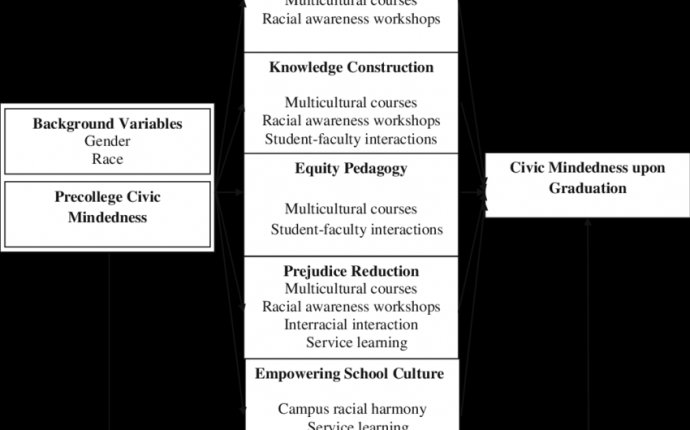
Banks, Multicultural Education
 By Allison Cumming-McCann
By Allison Cumming-McCann
Multicultural education is more than just teaching about "heroes and holidays" (Lee et al., 1998). It goes beyond teaching tolerance of differences, and it is much deeper than studying or celebrating Black History Month in February. So, what is multicultural education? To answer the question, we must first understand the goals, definitions, and a predominant model of multicultural education (Banks, 1998). Although I am not an adult basic educator, multicultural education as it is studied, conceptualized, and practiced in K-12 and higher education is applicable to adult basic education as well. In the next sections, I review the goals of multicultural education and provide a theoretical framework for implementing multicultural education into adult basic education programs.
Defining Multicultural Education
If you were to ask educators to define what multicultural education is, you would be unlikely to receive the same answer twice. The responses would range from adding new and diverse materials and perspectives to existing curricula to discussions of teaching styles and pedagogical approaches that meet the needs of traditionally underrepresented groups. Others might talk about education as a part of a larger, oppressive system, and explain that multicultural education must work to deconstruct this system. While multicultural education can be conceptualized in many different ways, some of the leaders in the field (for example: Banks, 1997; Nieto, 1996, 1999; Sleeter, 1996; Sleeter & Grant, 1994), define the goals and ideals of multicultural education similarly.
The primary goal of multicultural education is not merely to promote human relations, to help students feel good about themselves, or to preserve students' native languages and cultures. While these outcomes may be by-products, the primary goal of multicultural education is to promote the education and achievement of all students, particularly those who are traditionally dismissed and underserved in our education system (see box below). Sonia Nieto (1996) defines multicultural education as antiracist basic education for all students that permeates all areas of schooling, characterized by a commitment to social justice and critical approaches to learning. Furthermore, multicultural education challenges and rejects racism and other forms of discrimination in schools and society. It accepts and affirms differences in race, ethnicity, religion, language, economics, sexual orientation, gender, and other differences that students, communities, and teachers encompass. It should permeate the curriculum and instructional strategies used in schools, as well as interactions among teachers, students, and families in school and outside of it (Nieto, 1999).









